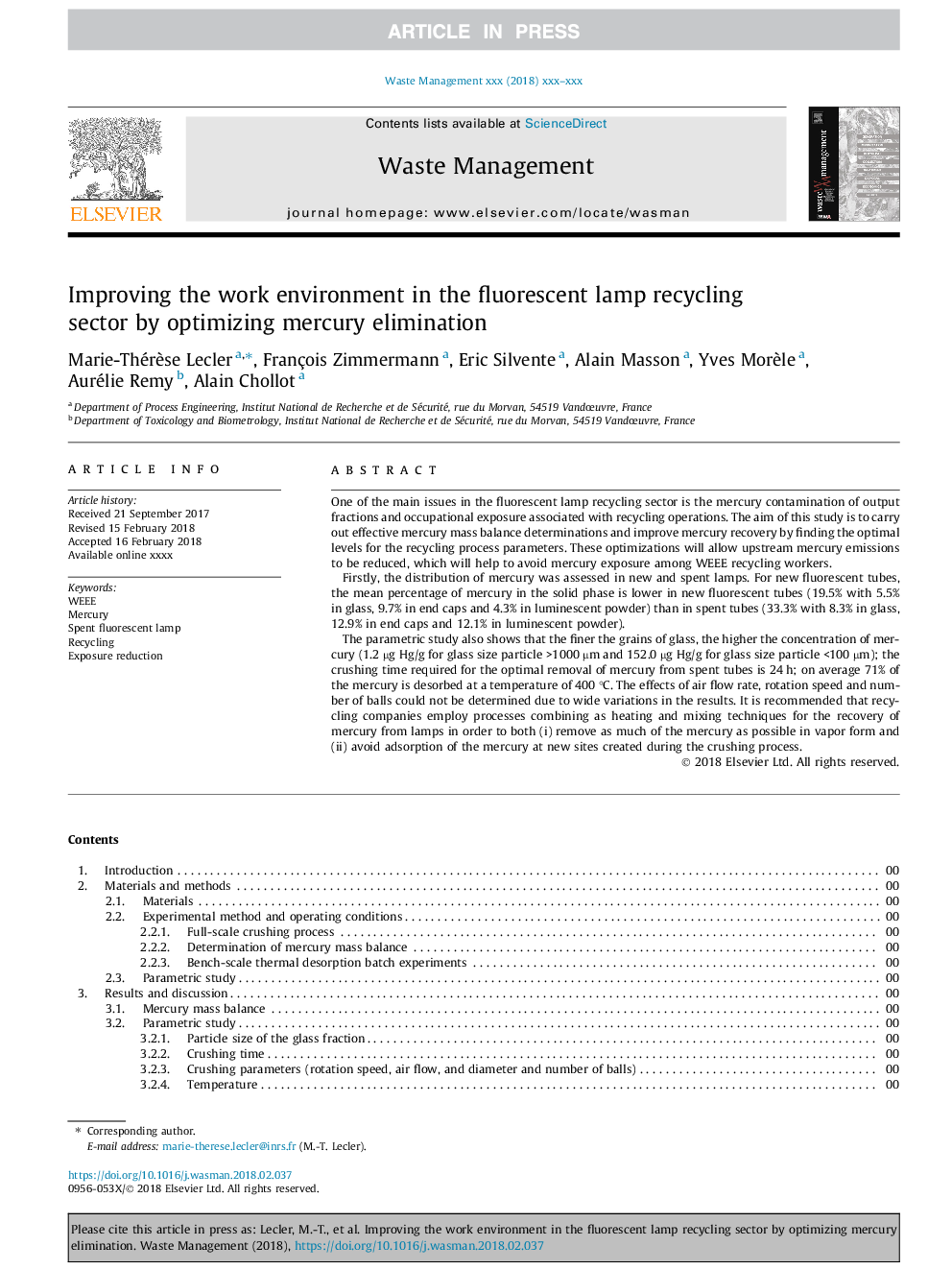| Article ID | Journal | Published Year | Pages | File Type |
|---|---|---|---|---|
| 8869624 | Waste Management | 2018 | 11 Pages |
Abstract
The parametric study also shows that the finer the grains of glass, the higher the concentration of mercury (1.2â¯Âµg Hg/g for glass size particle >1000â¯Âµm and 152.0â¯Âµg Hg/g for glass size particle <100â¯Âµm); the crushing time required for the optimal removal of mercury from spent tubes is 24â¯h; on average 71% of the mercury is desorbed at a temperature of 400â¯Â°C. The effects of air flow rate, rotation speed and number of balls could not be determined due to wide variations in the results. It is recommended that recycling companies employ processes combining as heating and mixing techniques for the recovery of mercury from lamps in order to both (i) remove as much of the mercury as possible in vapor form and (ii) avoid adsorption of the mercury at new sites created during the crushing process.
Related Topics
Physical Sciences and Engineering
Earth and Planetary Sciences
Geotechnical Engineering and Engineering Geology
Authors
Marie-Thérèse Lecler, François Zimmermann, Eric Silvente, Alain Masson, Yves Morèle, Aurélie Remy, Alain Chollot,
